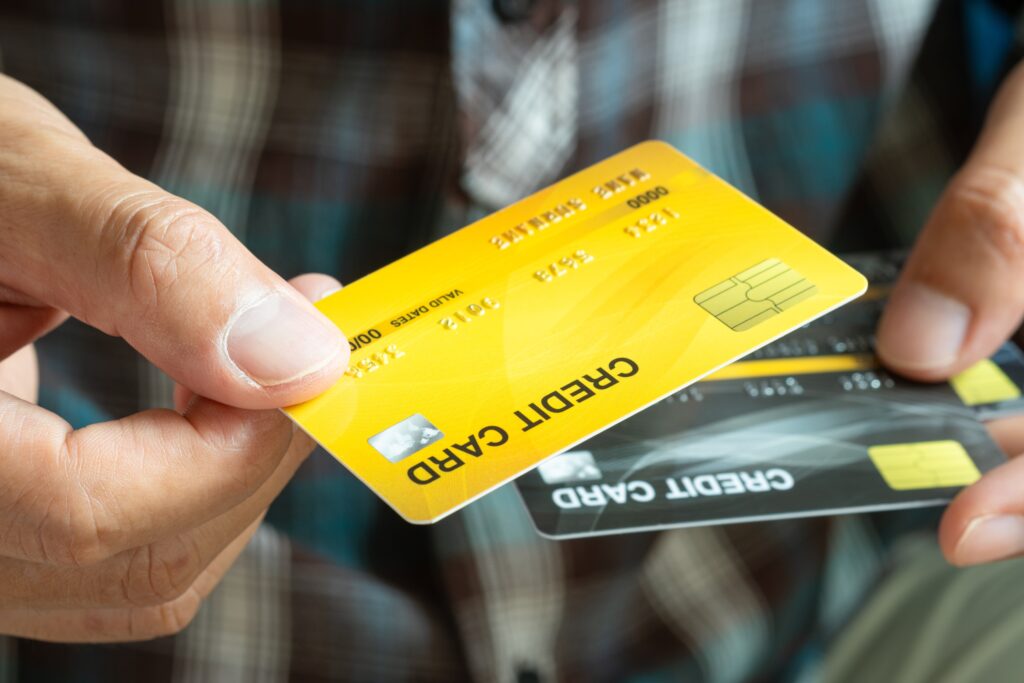 June 5, 2025
June 5, 2025
Getting your first credit card can be pretty exciting, but it can also feel a bit overwhelming, especially when you start encountering all those unfamiliar credit terms. What exactly is an APR? What about a grace period? How important is my credit limit? If you find yourself wondering these questions, don’t worry. You’re definitely not alone.
At Cards.ph, our mission isn’t just to help you discover the perfect credit cards but also to ensure you’re fully informed and ready to use them wisely. That being said, here’s an easy-to-follow guide on important credit card terms every cardholder (and soon-to-be cardholder) should know.
First Things First: Understanding the Basic Parts of a Credit Card
Before diving into deeper financial jargon, let’s cover the basic parts of a credit card. Knowing these details clearly makes using your card much easier, especially when shopping online or paying bills:
- Card Number: This is the 16-digit number you see prominently on the front of your card. Think of it as your card’s unique ID—something you’ll need whenever making online purchases.
- Cardholder Name: Simply put, this is your name as printed on your card. Always ensure it matches exactly with your ID, especially for verification purposes.
- Expiry Date: Usually written as month/year, this shows when your card expires and needs to be replaced.
- CVV (Card Verification Value): This is the three-digit number found on the back of your card. It adds a layer of security, helping to verify that you’re actually holding the card during online transactions.

Common Credit Card Terms You’ll Encounter
Now, let’s look at some common but crucial credit card terms that can directly impact your wallet and financial health.
Annual Fee
An annual fee is simply the yearly fee your bank charges for maintaining your credit card account. Some cards come without an annual fee as part of introductory offers or special promotions. If avoiding annual fees is a priority for you, you can choose from a wide range of great credit cards for beginners.
If your card has an annual fee of ₱2,500, ensure the benefits and rewards you earn exceed this amount to ensure you’re not losing money each year.
Annual Percentage Rate (APR)
APR might sound like a technical credit term, but it’s just the Annual Percentage Rate your bank charges. Simply put, it’s the cost of borrowing money from your credit card issuer. Lower APRs mean you’ll pay less interest if you don’t pay your balance in full each month.
For instance, let’s say your credit card APR is 3.5% monthly, and you owe ₱10,000. If you don’t pay that balance off completely, you’ll start accumulating the interest charges, quickly increasing your debt.
Balance
Your balance is how much you owe your bank. This includes all your purchases, fees, and accumulated interest. Ideally, you should always aim to pay your balance in full every month, which prevents interest from piling up.
Billing Cycle
Your billing cycle is typically around 28 to 31 days, and it determines which transactions appear on each month’s statement. For example, purchases you make from January 1st to January 31st will show up on your February billing statement. Knowing this credit card term helps you budget and avoid unnecessary late fees.

Credit Limit
Your credit limit is the maximum amount you can spend on your credit card. Banks decide your limit based on your income, financial history, and spending habits. Always keep an eye on your limit to maintain a healthy credit score. A general rule of thumb is to spend no more than 30% of your credit limit.
For instance, if your limit is ₱30,000, try not to let your monthly balance exceed ₱9,000. Doing this signals to lenders that you’re financially responsible.
Minimum Payment
This credit term is the smallest amount you can pay each month to keep your account active and avoid late fees. Typically, it’s around 2% to 4% of your total balance. However, consistently paying only the minimum means you’ll accumulate interest, increasing your debt over time.
Grace Period
A grace period is typically 21 to 55 days after your billing cycle closes, during which you can pay your balance without incurring interest. Knowing your grace period helps you time your payments and saves you money.
For example, if your billing cycle ends on the 15th of every month, and your grace period is 25 days, paying your bill before the 10th of the next month helps you avoid interest charges.
Late Payment Fee
If you miss your due date, you’ll usually be charged a late payment fee. Additionally, late payments negatively affect your credit score, which can impact your ability to get loans or favorable interest rates later on.
Cash Advance
Cash advances allow you to withdraw cash using your credit card. But here’s a friendly tip on this credit card term: avoid this unless it’s absolutely necessary. Cash advances often come with high fees and steep interest rates. Interest usually starts accruing immediately, making it a costly option.

Credit Score
Your credit score reflects your creditworthiness, meaning how reliable banks see you in terms of paying back your debts. Having a good score helps you qualify for better credit card offers, loans, and lower interest rates.
Credit Card Security Terms Worth Remembering
Familiarizing yourself with these security terms is equally important to keeping your financial details safe:
- EMV Chip: That small microchip part of your credit card is designed to reduce fraud. It generates unique transaction codes that make it harder for your details to be stolen.
- Two-factor Authentication (2FA): This is a security measure requiring you to verify your identity twice, usually by entering your card details plus a One-Time Password (OTP) sent to your mobile phone.
- Phishing: This is a common online scam designed to trick you into giving away your card details. Always check website authenticity before entering sensitive information.
Reward-Related Credit Terms You’ll See Often
If credit card rewards interest you, here are more credit terms to help you maximize them:
- Cashback: Earn back a percentage of your spending, returned directly as cash or credit.
- Rewards Points: Accumulate points for every peso spent, redeemable for various perks like gift cards or merchandise.
- Miles: Usually associated with travel-related spending, miles can be redeemed for flights or travel upgrades.
Common Fees to Avoid Surprises
Finally, being aware of extra fees can save you unexpected costs:
- Foreign Transaction Fees: These are charged to your credit card when it is used for buying things abroad or online from foreign websites.
- Balance Transfer Fees: These fees are applied when you move your balance from one credit card to another. This is typically around 2% to 5%.

Make Credit Terms Work for You
Understanding these credit terms empowers you to manage your money smartly. By clearly grasping these concepts, you’ll be well-prepared for responsible credit card use, improved financial security, and less stress.
At Cards.ph, we’re committed to helping you not only choose the right card but also understand exactly how to make it work for you. Explore our resources on how to use a credit card and make confident choices for your financial future!